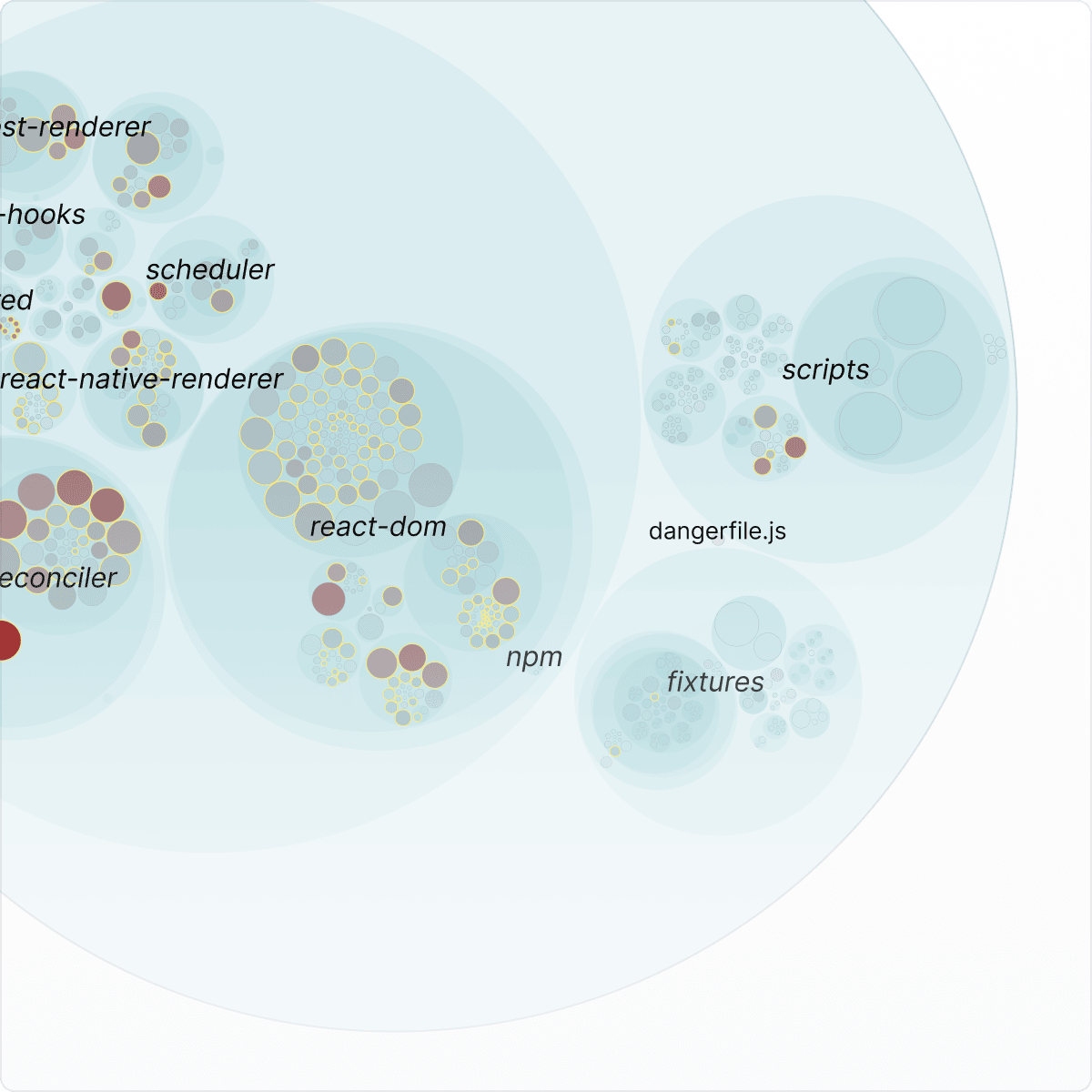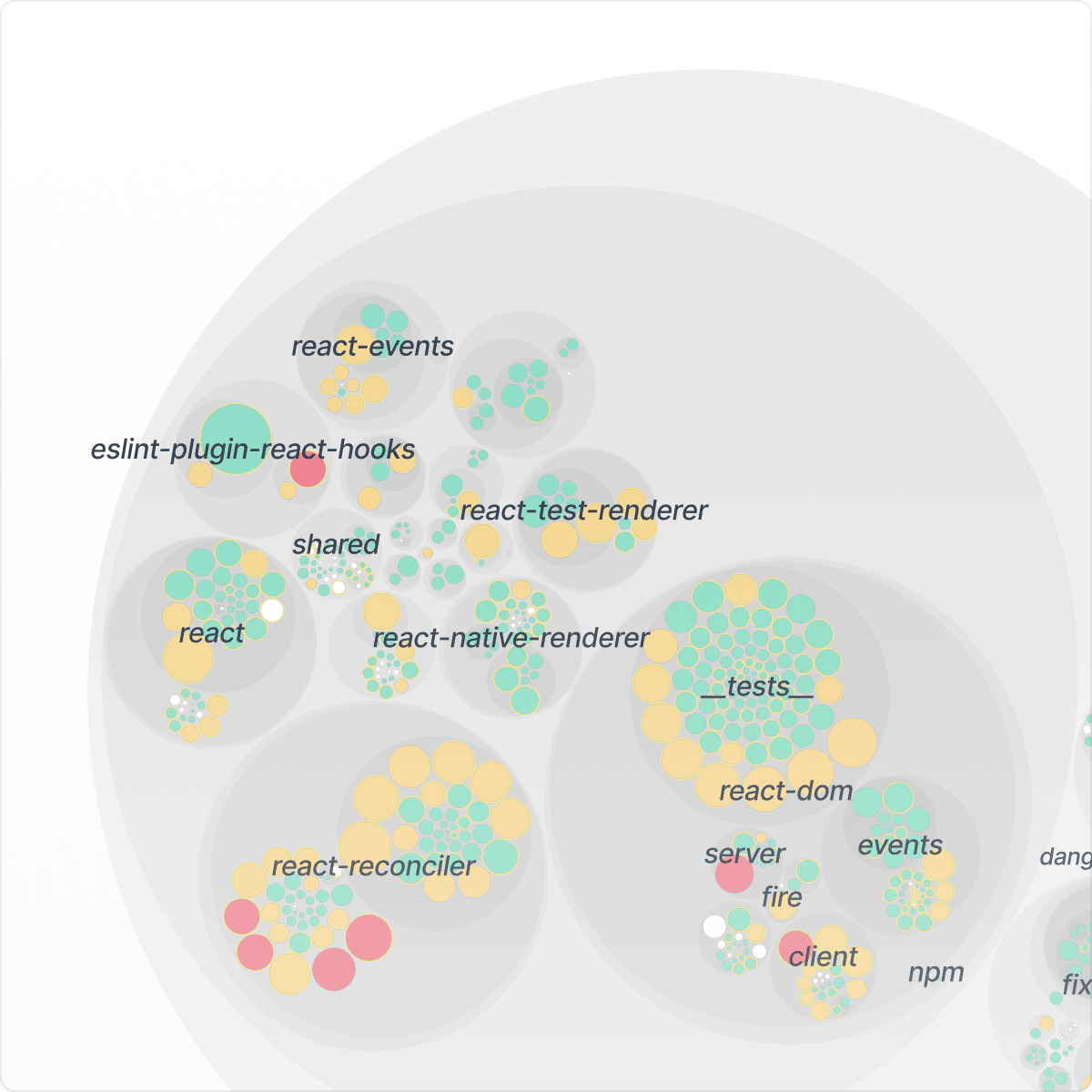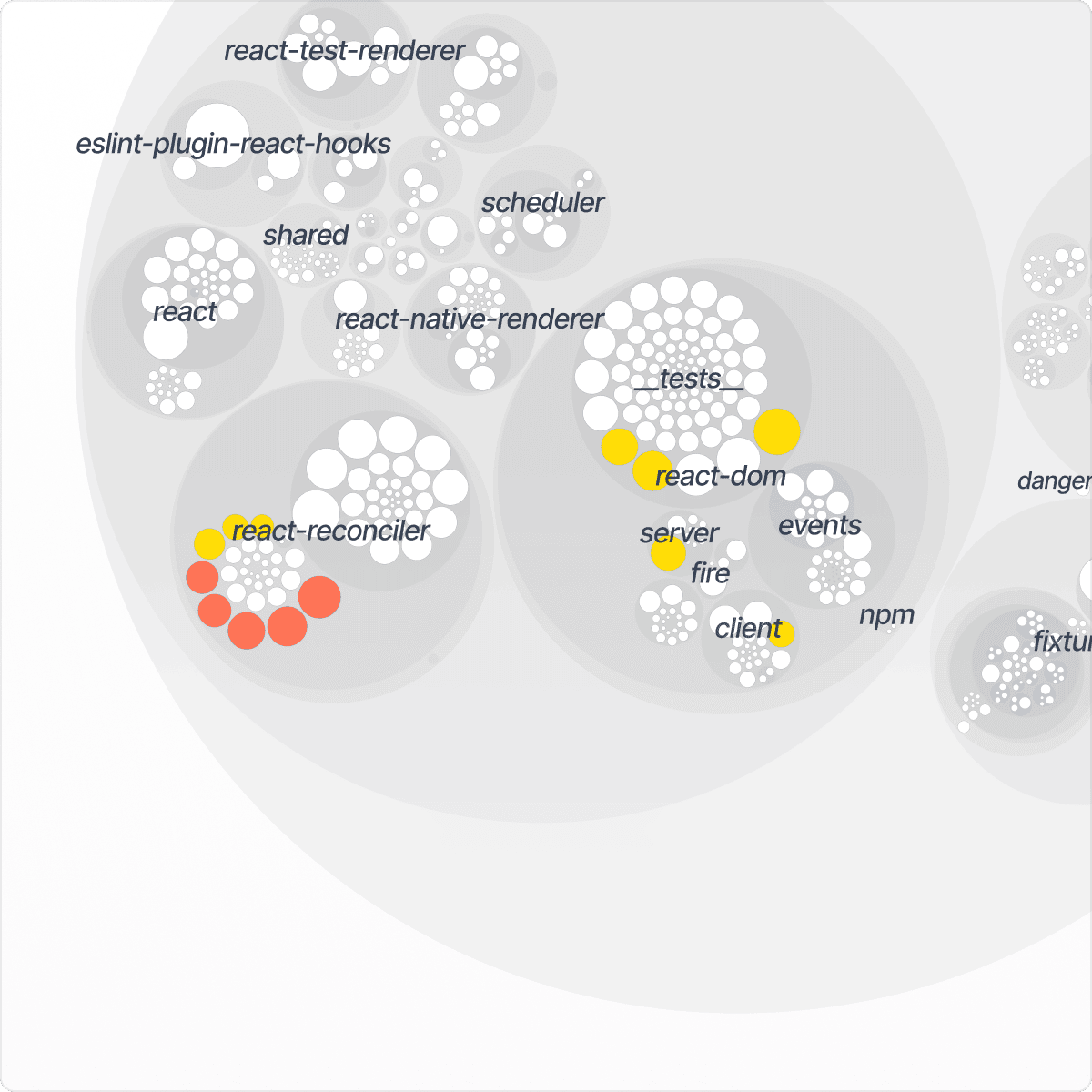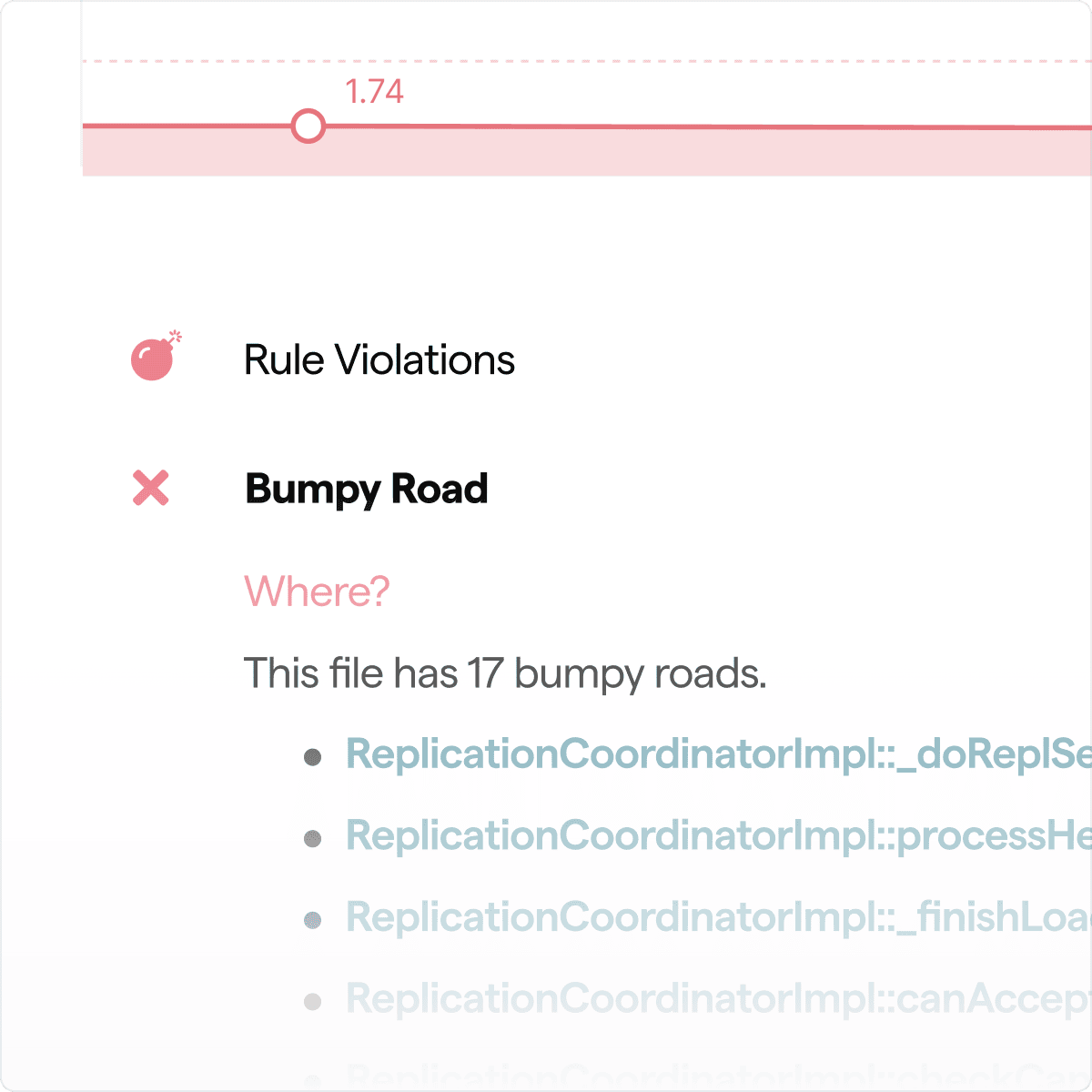Use cases
Focus on Refactoring Targets
Use the File-Level Hotspot Map to visualize refactoring targets. CodeScene combines Code Health and development activity to identify and rank high-risk hotspots, code that changes often and has low health. Fixing red targets, your top technical debt, offers the highest ROI.
Empowering the world’s top engineering teams
A more proactive way of working
Fix the worst tech debt or squeeze in another feature?
There’s a strong correlation between frequently modified, low-code-health code and software defects.
Let CodeScene prioritize
Viewing the full Code Health perspective highlights the importance of priorities. Even if a module has a lower health, it does not mean that it requires attention or immediate action.
Find what's most relevant
Our machine learning algorithms will sort out the relevant code health issues from the ones with less priority. Filter out and inspect the code health of the most active parts of the code.
Use defects to put costs on hotspots
CodeScene comes with a Defect Density view. Since most organizations have a known and estimated number on how much a defect costs, use defects to predict the costs of any sub-optimal code in the hotspots.
Refactoring recommendations
Reduce technical debt based on impact
Step 1 - Hotspots
Locate Development Hotspots
Most development activity tends to be located in relatively few modules. The Hotspot view helps you identify those modules where you spend most of your development time. Hotspots are an excellent starting point if you want to find your productivity bottlenecks in code.


Step 2 - Combining with the CodeHealth™ perspective
Visualize the Code Health of your codebase
Use the Code Health view to get a quick assessment of potential technical debt or maintenance problems. CodeScene calculates the CodeHealth™ of all the files in your codebase. Viewing the full code health perspective highlights the importance of priorities, a module can have a lower health but does not require attention or immediate action.
Step 3 - Let CodeScene prioritize
Identify your refactoring targets
CodeScene prioritizes hotspots by analyzing change patterns, focusing on frequently modified, low–code health files that impact multiple modules or teams. Fixing tech debt or code quality issues in red refactoring targets come first, offering the fastest return on investment.

.png?width=1200&height=1200&name=code-health-goals%20(1).png)
Step 4 – Align refactoring with strategic goals
Set strategic goals for smarter refactoring
CodeScene allows you to define specific goals for your codebase, ensuring that refactoring efforts are purposeful and aligned with broader development strategies. Define goals like Planned Refactoring to target technical debt, or Supervise to keep an eye on fragile code. This helps teams focus on changes that make the biggest impact on CodeHealth™.
Virtual code review
Refactoring recommendations
When reviewing a file virtually, CodeScene lists all code issues and shows past solutions for each issue alongside their descriptions. It ranks examples by readability and code health improvement, prioritizing those from related files. That way, the recommended refactorings reflect your team’s domain and preferred style.

.png?width=1200&height=1200&name=function-xray%20(1).png)
X-ray
Deep dive into code hotspots
X-ray offers a granular analysis of code hotspots at the function or method level. It helps teams to identify the most complex and frequently changed parts of the code, understand the reasons behind code coupling and dependencies, and receive specific recommendations.
Hotspots aren’t just complex — they’re risk magnets
Why frequently-changing, complex code is a problem
Complex code that changes often poses a serious risk to long-term maintainability
The hotspot has to be changed together with several other modules
When code in one area frequently triggers changes in other modules, it indicates tight coupling. This makes refactoring risky and increases the chance of unintended side effects across the codebase.
The hotspot affects many different developers on different teams
Code that touches multiple teams becomes harder to manage and align across priorities. It often leads to coordination overhead, conflicting changes, and slower delivery cycles.
The hotspot is likely to be a coordination bottleneck for multiple developers
When several developers regularly modify the same piece of complex code, it increases the risk of merge conflicts, duplicated work, and misunderstandings, turning the code into a productivity sink.
Take control of your technical debt today
Don't let technical debt slow down your development process. Identify your refactoring targets and start improving your code health.